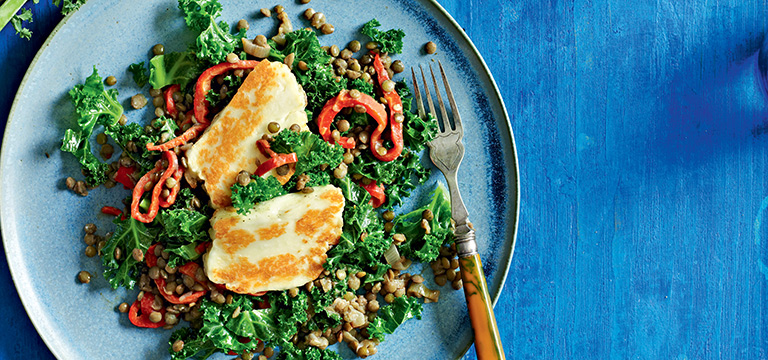Variety is key in a balanced diet. Foods with a similar nutritional content can be sorted into five groups and we thrive on eating different foods from each of these. Some foods should make up a larger part of our diet than others, so let’s take a look at how to get a good balance. Here are the essentials that form part of a balanced diet.
Fruits and vegetables
Eat plenty of fruits and vegetables - at least 5 servings a day. These should be at the heart of a balanced diet, yet so many of us struggle to get close to that number. In addition to eating them fresh; frozen and canned also count, as does a small glass (150ml) of 100% fruit juice or smoothie or a small handful of dried fruit.
Grains, potatoes, bread, pasta and other starchy carbohydrates
Base main meals and snacks on satisfying wholegrain foods from this group such as wholewheat pasta or brown rice. Aim for around 3 to 5 servings a day, or more for men, teenage boys or if you are particularly active.
Beans, pulses, fish, eggs, meat and other proteins
Include plant-based proteins such as beans, peas, lentils, nuts and seeds, and animal-based proteins such as lean meat, poultry and fish. These provide essential nutrients to support with our body’s growth and repair. A couple of servings a day should be ample. Oily fish such as sardines, herring and mackerel, whether fresh, frozen or canned, are especially rich in beneficial omega-3 fats and can be enjoyed up to twice a week.
Dairy foods
Include some dairy foods or fortified plant-based alternatives such as soya milk to provide an important source of protein, calcium and other minerals. Choose plain lower fat milks and unsweetened yoghurts and enjoy cheese in small amounts. About 3 servings a day should be enough but older children and teenagers will need more.
Oils and spreads
Use small amounts of heart-healthy plant-based oils or spreads such as rapeseed, olive or sunflower oils - these contain unsaturated fats. Be careful though as they can easily add extra calories to your diet.
Carbohydrates
Carbohydrates fall into two main groups, those that directly provide our bodies with energy and those that remain undigested by us.
Thinking of the first group, the energy-givers, these are often described as simple (sugars) or complex (starches) in relation to their chemical structure.
The grains, potatoes, bread and pasta food group is the main provider of complex carbohydrates in our diets. Ideally we should choose wholemeal or wholegrain over refined foods more often, as these are more nutritious with higher amounts of fibre, vitamins and minerals.
Sugars
Sugars can be naturally present in foods such as in plain milk and yoghurt, fruit and vegetables, or they can be added, as is the case with table sugar, honey or syrups. While we do not need to worry about the sugars naturally found in whole foods, those that are ‘free’ - added or in liquid form, as with fruit juice and smoothies, can quickly add extra calories and promote tooth decay, and so we need to limit our intake of these.
A healthy balanced diet should contain a maximum of around 30g of free sugars a day for adults, which equates to around 7 cubes or teaspoons of sugar. Children should have proportionately less, for example, 4 to 6 year olds should have a maximum of 19g of free sugars, equal to 5 cubes or teaspoons of sugar.
Fibre
A healthy balanced diet should provide adults with around 30g of fibre a day and children and teenagers need proportionally lower amounts. Eating plenty of plant-based foods, including wholegrain cereals and cereal products such as wholemeal bread or pasta, will ensure that fibre needs are met.
Fats
It’s fair to say that not all fats are created equal and certainly fats shouldn’t universally be seen as ‘bad’. We should aim to get our dietary fats from whole food sources and use only small amounts of added fats (preferably unsaturated) when preparing and cooking foods.
Protein
Alongside carbohydrates and fats, proteins are the other main macronutrient that we need in large amounts, partly for energy, but also in the case of proteins, their main purpose is to provide us with a good supply of amino acids.
Including a variety of protein sources in the diet ensures that we are provided with a complete mix of all the essential amino acids that we need to survive. Note that although animal foods (meat, poultry, fish, eggs and dairy products) contain a good mix of all the essential amino acids, individual plant foods, generally speaking, on their own, do not.


